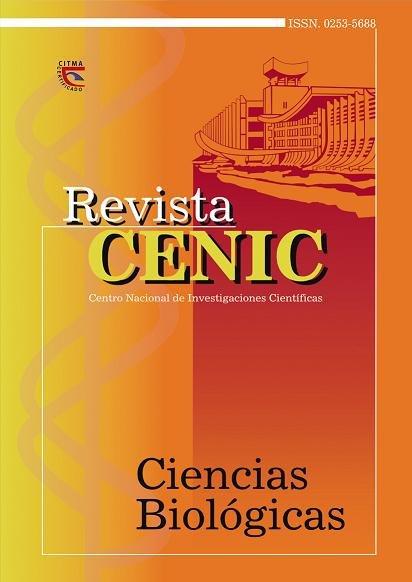Regeneración de plantas fértiles de tabaco (Nicotiana tabacum L.) var. Corojo Especial a partir de protoplastos del mesófilo foliar
Abstract
To date, Nicotiana tabacum L. has been considered a very useful tool as experimental laboratory model and, for many regions worldwide, it also constitutes a very important commercial crop. Fbr these reasons, great efforts are directed to the genetic improvement of different tobacco cultivars by means of genetic engineering and tissue culture techniques. In this paper, an efficient protocol for protoplast isolation,culture and plant regeneration from the leaf mesophyll of the tobacco commercial variety Corojo Especial is described. By using this technology, the authors obtained about 3 and 3,5 protoplasts per gram of enzymatically digested fresh tissue from in vitro cultures plants. A planting density of 0,5 protoplasts/mL or higher is required for a constant multiplication rate, occurring first divisions after 6 or 7 d culture. The microcalli formation can be observed in about 15 d of culture in a mixture
of K3 medium and H solution containing 0,1 mg/L of 2,4-dichlorophenoxyacetic acid, 0,2 mg/mL of 6 benzylaminopurine and 1,0 mg/mL of naphthalenacetic acid. More than 75 % of cultured protoplasts formed cell clusters. The resultant calli were cultured for plant regeneration in MS medium supplemented with 1 mg/mL of 6-benzylaminopurine. The plant regeneration efficiency reached 0.88 %, which is similar to the values reported for "model varieties" as Petit Havana (SR-1). Based on this observation, it was concluded that protoplast culture in Nicotiana is little genotype dependent. Regenerated plants grew and rooted well in Murashige and Skoog medium with out hormones.
Downloads

Downloads
Published
How to Cite
Issue
Section
License
Copyright (c) 2000 Copyright (c) 2000 Revista CENIC Ciencias Biológicas

This work is licensed under a Creative Commons Attribution-NonCommercial-ShareAlike 4.0 International License.
Los autores que publican en esta revista están de acuerdo con los siguientes términos:
Los autores conservan los derechos de autor y garantizan a la revista el derecho de ser la primera publicación del trabajo al igual que licenciado bajo una Creative Commons Atribución-NoComercial-CompartirIgual 4.0 Internacional que permite a otros compartir el trabajo con un reconocimiento de la autoría del trabajo y la publicación inicial en esta revista.
Los autores pueden establecer por separado acuerdos adicionales para la distribución no exclusiva de la versión de la obra publicada en la revista (por ejemplo, situarlo en un repositorio institucional o publicarlo en un libro), con un reconocimiento de su publicación inicial en esta revista.
Se permite y se anima a los autores a difundir sus trabajos electrónicamente (por ejemplo, en repositorios institucionales o en su propio sitio web) antes y durante el proceso de envío, ya que puede dar lugar a intercambios productivos, así como a una citación más temprana y mayor de los trabajos publicados (Véase The Effect of Open Access) (en inglés).














